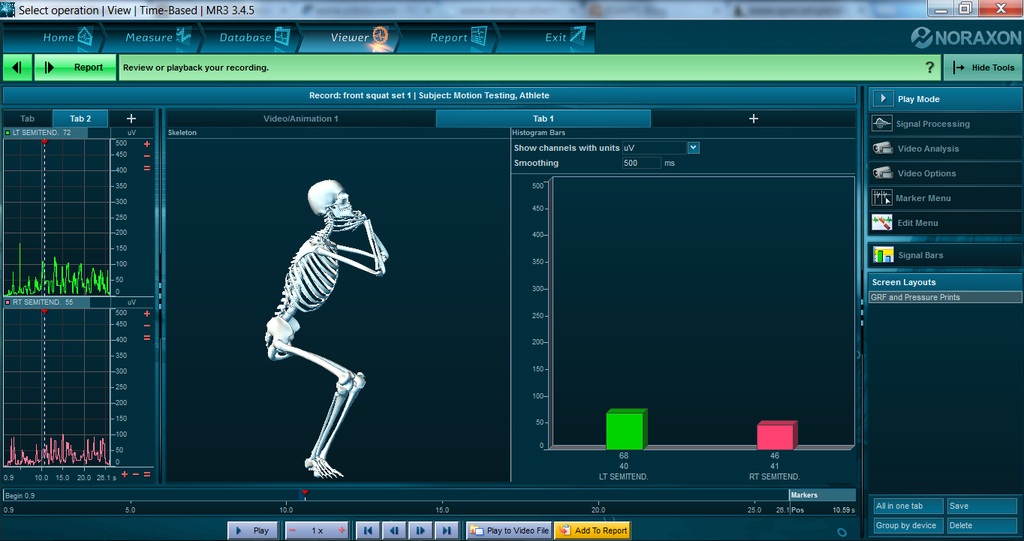
Performance coaches and medical specialists are looking for the best approaches during screening to reduce injuries. With time being a precious and almost endangered resource, coaches and therapists are wanting to gain as much information and data as possible during testing and evaluations. Professionals at all levels, be they in the clinic or in the field, are looking for the right data, not just more. One of the best ways to improve outcomes in screening is to add surface electromyography (SEMG) to the common tests used for assessment to get deeper and more defined information that goes beyond simple video capture. Most movement screens are scored based on visible criteria and knowledge of biomechanical compensation and neuromuscular recruitment patterns is difficult to discern solely through ocular observation.
Integrating SEMG is easy, provided one knows what to look for. Noraxon’s Clinical DTS SEMG system can capture the direct activity of the body's muscles in action, be it during a movement screen, sporting action, or an actual exercise in the weight room. SEMG helps practitioners evaluate what is going on at rapid speeds or can help validate interventions based on initial screenings. Currently there are five main principles clinics and organizations are finding to be the best practices in regards to complex injuries or effective screening programs. They are:
- Symmetry Threshold - An athlete's body is not perfectly symmetrical, and some sports are obviously not going to have symmetry such as baseball. While some asymmetry will exist between limbs from adaptation, the lower extremity especially is more predisposed to injury when dissimilarities become pronounced to the point of injury. No true percentage exists, but when the discrepancy becomes consistently greater than 10% risk will increase as the differentiation widens.
- Coordination Scoring - EMG looks at how efficient an athlete’s muscle recruitment is based on quiet periods, or times that muscles react and show little activation. The ability to efficiently move without various muscle groups being "on" is a cardinal sign of both coordinated movement and reduced risk of injury from proper timing. Coaches and medical professionals can create unique and individual scoring of efficient movement when surface EMG is used, ranging from gross primitive movements to the most fine motor abilities such as sporting actions.
- Optimized Sequence - Proper summation of forces will result in a more powerful movement, requiring a precise sequence of firing patterns through the kinetic chain. An error in timing, such as a muscle group in a joint action being too early or too late will increase the risk of injury through overload or reduce the performance of the action. EMG records the muscle firing pattern in milliseconds, meaning a very ballistic action such as throwing, kicking, jumping, and sprinting can be analyzed at speeds the naked eye can't see.
- Peak Activity – By using EMG to measure maximum muscle recruitment and look at patterns of firing and amplitude changes, training programs can more effectively prepare the body and ensure it is properly rehabilitated, with the appropriate work rest dosages. Higher levels of activity can be signs of successful intervention or improved motor control. Wireless EMG can capture an array of muscle groups to ensure maximum output is reached.
- Evidence Based Norms - Ideal models tend to be averages of a larger population with research. Deviations from the norm contribute to increased risk of injury or a decrease in performance if not carefully managed. At times outliers will create a need for unique analysis to properly assess individual differences, requiring medical and performance specialists to collaborate and support athletes with unique mechanics or styles.
In the next article we will investigate the above five principles of SEMG with case studies and show how without the measurements evaluations in movement screening would be deceiving. Surface EMG reveals what is going on below the surface; information that visually can't be seen must be revealed in order to make more accurate evaluations of athletes in motion.




